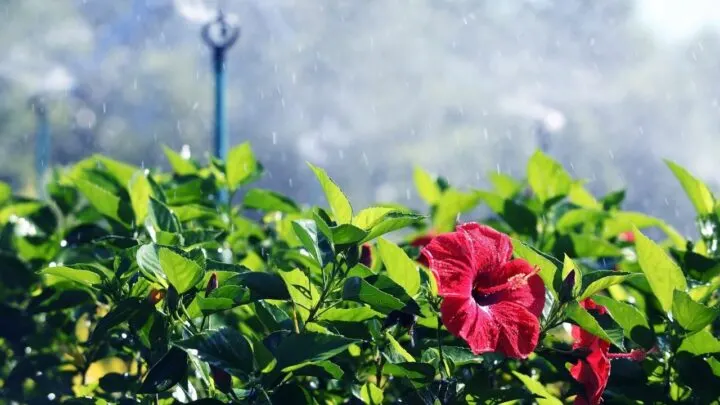The hibiscus, otherwise known as the Hibiscus rosa-sinensis, is a plant that’s part of the mallow family.
There are currently over 300 varieties of this tropical flower, including several hybrid varieties.
It is native to China and the Pacific Islands but has gained popularity as both a garden and house plant across the globe.
Now, the question is, do you want to take care of a hibiscus plant?
If your answer is yes, better continue reading below. Learning how much water this plant needs is a good start to knowing more about taking care of the hibiscus.
Table of Contents
How much water does a hibiscus need?
The hibiscus plant, also known as the mallow, is a very-moisture rich plant. It originates from tropical areas such as Asia and the Pacific Islands, where the climate is very warm throughout the year. As a result of this, the hibiscus needs lots of hydration during the summer months and less during the winter. Your plant should always be watered until the soil is completely wet, and should not be watered again until the soil is dry to the touch.
Watering your hibiscus during summer
During the late spring and mid-summer months, your hibiscus plant will need to be watered almost daily.
This is because the hibiscus flower holds lots of moisture, and therefore needs larger amounts of water during its blooming stage.
The average root length of hibiscus is 6 inches, so ensure that the soil is fully soaking through as you water your plant.
Watering your hibiscus during winter
This plant isn’t typically built for the cooler months of the year, and therefore needs a lot less water in the autumn/winter seasons.
During the winter, you should only water your hibiscus when the soil is almost completely dry to touch.
If your climate is warm enough to keep your hibiscus plant outside during the winter, you will need to give it less water than you would if you were to move your plant inside.
Watering too much or too little
If you think that you might be watering your hibiscus too much, check the soil 90 minutes after watering.
If the soil is still wet or there is a lot of excess water, you may need to change your watering schedule.
You may notice that the leaves will start to turn yellow and drop. Consistently overwatering your plant can also lead to root rot, which is caused by a lack of oxygen to the plant’s roots.
If your hibiscus plant does not get enough water and the soil is too dry, its flowers will start to wilt.
If caught at the right time, this process can be reversed by watering the soil so it is soaked through more regularly.
Try not to let the roots become dehydrated often, as it can burden your plant’s future growth.
Frequently Asked Questions about Watering Hibiscus
What type of water should I use?
Hibiscus plants are usually tolerant to most varieties of water, meaning common tap water should be perfect. There needs to be an average amount of pH in the water, as it can be harder to grow hibiscus in areas with high or low water pH.
What temperature should the water be?
Never use cold water on your hibiscus. Cold water will shock your plants, especially during the warmer months. During the summer be sure to use lukewarm water, and during the winter be sure to use warm water (but not hot water!). This will simulate the tropic conditions that these plants are used to.

Daniel has been a plant enthusiast for over 20 years. He owns hundreds of houseplants and prepares for the chili growing seasons yearly with great anticipation. His favorite plants are plant species in the Araceae family, such as Monstera, Philodendron, and Anthurium. He also loves gardening and is growing hot peppers, tomatoes, and many more vegetables.


